CRFR
CRFR (Corticotropin-releasing Factor Receptor), also known as corticotropin-releasing hormone receptor (CRHR), belongs to the G protein-coupled receptor family. There are 3 types of this recetpor, CRF1, CRF2 and CRF3 receptor. CRF1 receptor (CRF1 or CRF1α) is functionally coupled to adenylate cyclase and it belongs to the secretin-like, family B of GPCRs. CRF1 receptor has several splice variants (CRF1c-CRF1m) including CRF1β. CRF2 receptor is a 411-amino acid protein with approximately 70% identity to the known CRF1 and it is functionally coupled to adenylate cyclase. The CRF2 receptor has been shown to be expressed as three functional splice variants, the CRF2α (411-413 amino acids), the CRF2β (431-438 amino acids) and the CRF2γ (397 amino acids). CRF3 receptor is a 428-amino acid protein, which binds CRF with a 5-fold higher affinity than URO and SVG and is expressed in the pituitary gland, urophysis, and brain.
CRFR subserves central functions related to stress physiology, and also exerts peripheral actions relevant to cardiovascular, muscular, gastrointestinal, pancreatic, inflammatory, and neoplastic diseases.
Targets for CRFR
Products for CRFR
- Cat.No. Product Name Information
-
GC66088
α-Helical CRF(9-41) TFA
α-Helical CRF(9-41) TFA is a competitive CRF2 receptor antagonist with KB of ~100 nM. α-Helical CRF(9-41) TFA is also a partial agonist of CRF1 receptor with an EC50 of 140 nM.
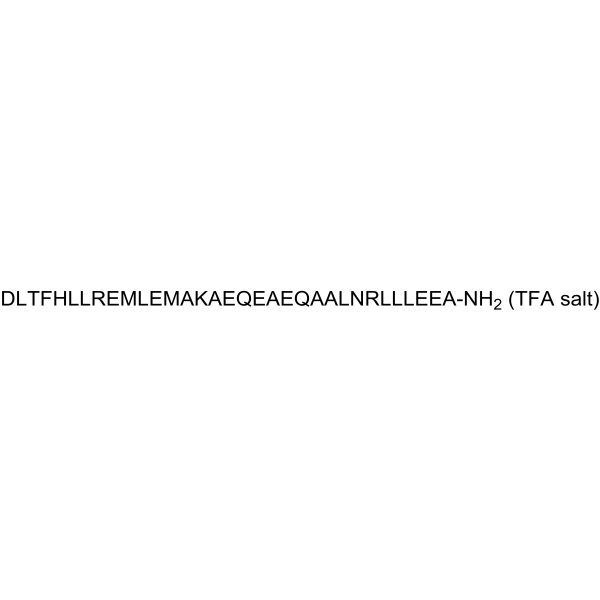
-
GC38886
Antisauvagine-30 TFA
Antisauvagine-30 TFA (aSvg-30 TFA) is a potent, highly selective and competitive CRF2 receptor peptidic antagonist.
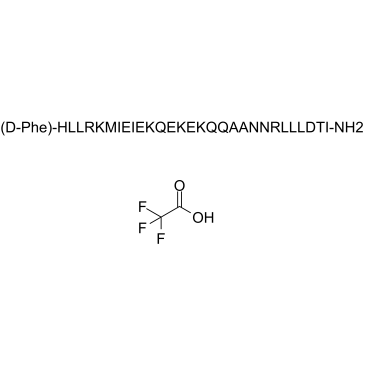
-
GC50455
Cortagine
Potent and selective CRF1 agonist

-
GC60724
Corticotropin-releasing factor (human) (acetate)
Corticotropin-releasing factor human acetate (Human CRF acetate) stimulates the synthesis and secretion of adrenocorticotropin in the anterior pituitary.
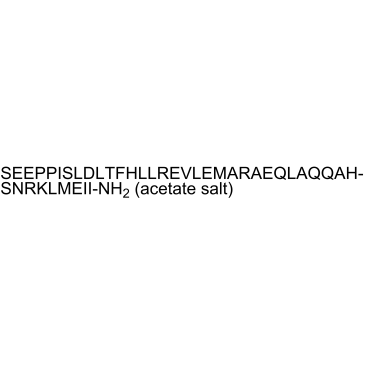
-
GC31043
CP 316311
CP 316311 is a potent and selective CRF1 receptor antagonist with an IC50 value of 6.8 nM.
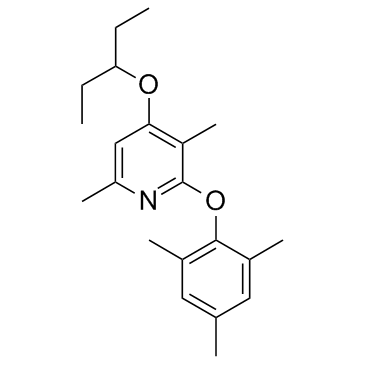
-
GC30863
CP 376395 (CP-316311)
CP 376395 (CP-316311) is a potent and selective Corticotropin releasing factor 1 (CRF1) receptor antagonist.
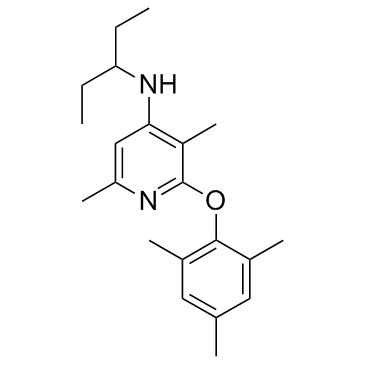
-
GC35748
CRF, bovine
CRF, bovine is a potent agonist of CRF receptor, and displaces [125I-Tyr]ovine CRF with a Ki of 3.52 nM.
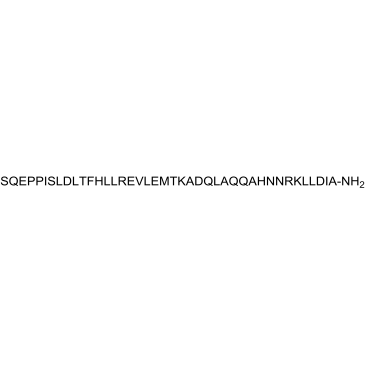
-
GC34542
CRF, bovine TFA
CRF, bovine (TFA) is a potent agonist of CRF receptor, and displaces [125I-Tyr]ovine CRF with a Ki of 3.52 nM.
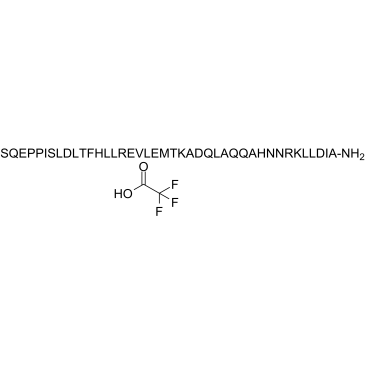
-
GC31166
Emicerfont (GW876008)
Emicerfont (GW876008) is a corticotropin-releasing factor type 1 (CRF1) receptor antagonist with an IC50 of 66 nM.
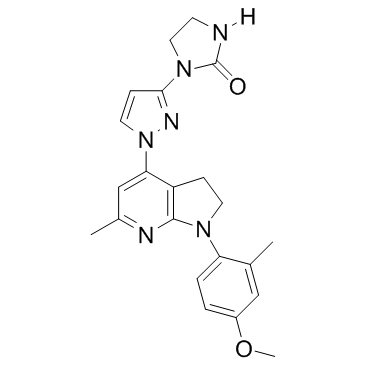
-
GC36787
NVS-CRF38
NVS-CRF38 is a novel corticotropin-releasing factor receptor 1 (CRF1) antagonist with low water solubility.
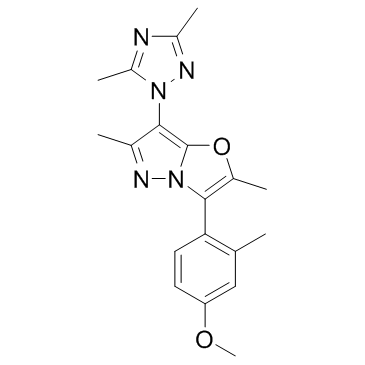
-
GC33712
Pexacerfont (BMS-562086)
Pexacerfont (BMS-562086) is a selective corticotropin-releasing factor (CRF1) receptor antagonist with IC50 of 6.1±0.6 nM for human CRF1 receptor.
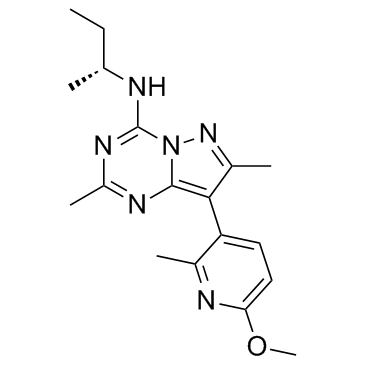
-
GC30792
R121919 (NBI30775)
R121919 (NBI30775) (NBI30775) is a potent small-molecule CRF1 receptor antagonist with a Ki of 2 to 5 nM for the CRF1 receptor and over 1000-fold weaker activity at the CRF2 receptor, CRF-binding protein, or 70 other receptor types.
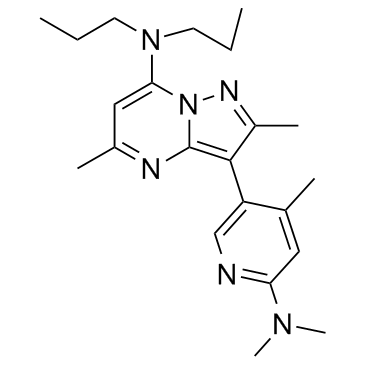
-
GC65893
Tildacerfont
Tildacerfont is a potent and orally active corticotrophin-releasing factor type 1 (CRF1) receptort antagonis. Tildacerfont effectively reduces adrenocorticotropic hormone (ACTH) and adrenal androgen levels. Tildacerfont has favourable safety profile. Tildacerfont can be used for researching congenital adrenal hyperplasia.
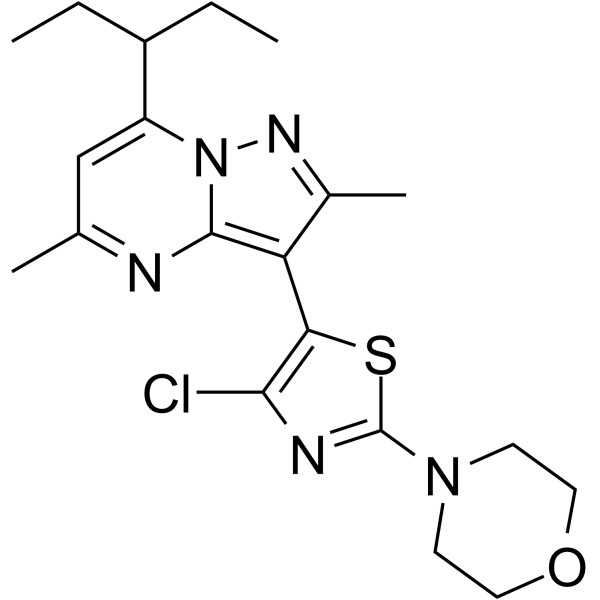
-
GC17432
Urocortin (human)
Endogenous CRF agonist

-
GC12802
Urocortin (rat)
Endogenous CRF agonist
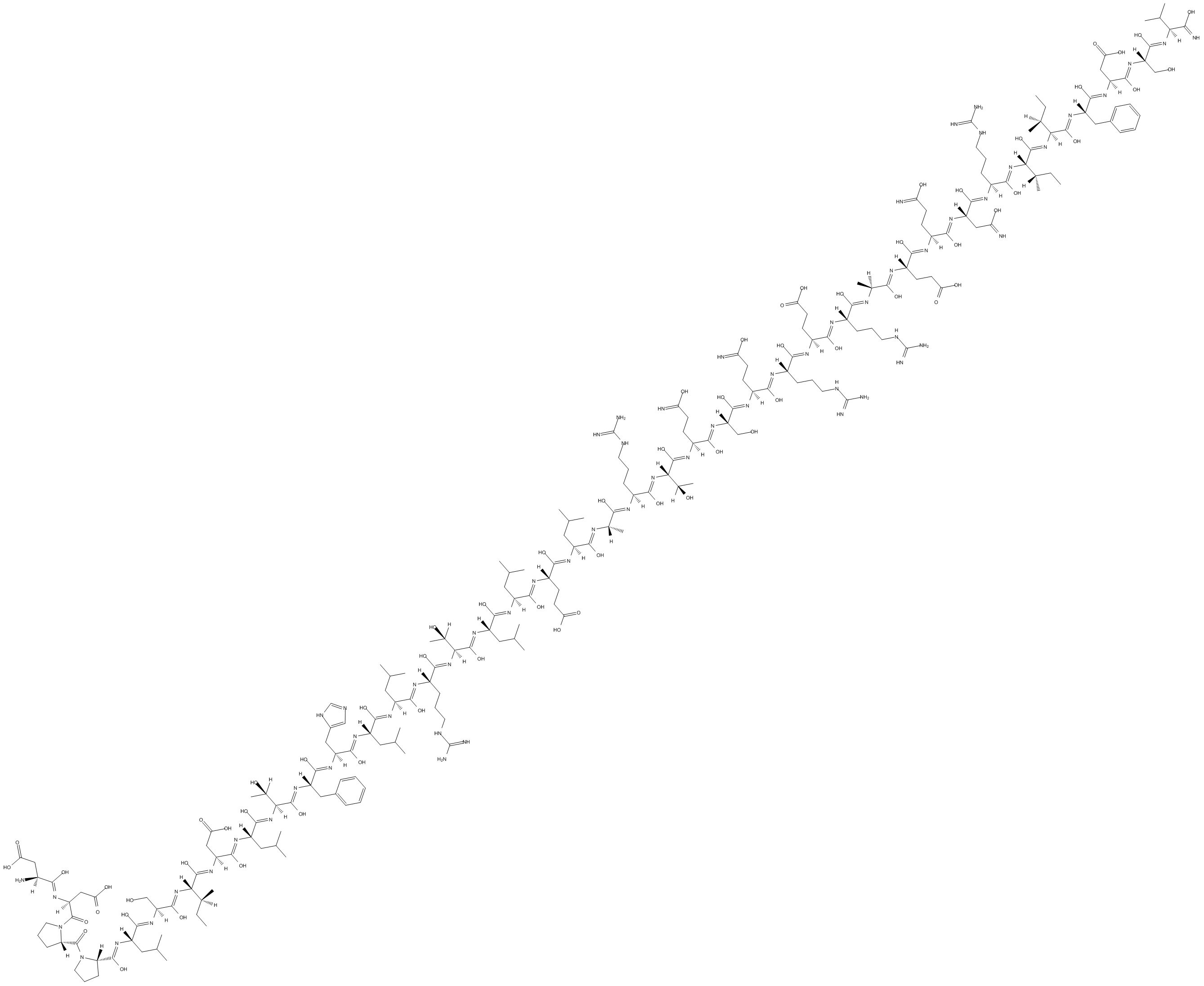
-
GC37868
Urocortin II, human
Urocortin II (human) is a selective endogenous peptide agonist of type-2 corticotropin-releasing factor (CRF2) receptor.
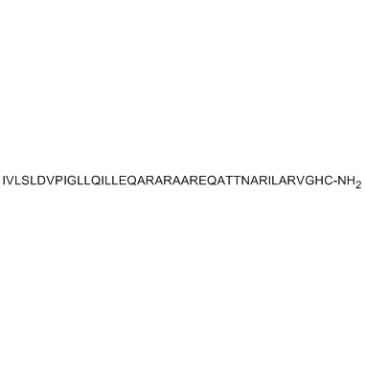
-
GC37869
Urocortin III, mouse
Urocortin III, mouse is a corticotropin-releasing factor (CRF)-related peptide.
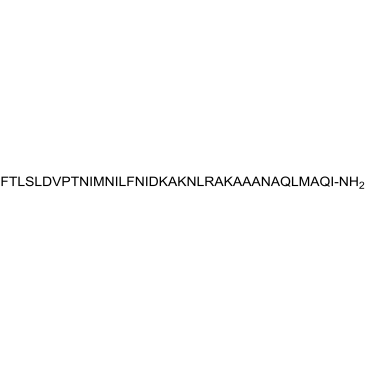
-
GC37870
Urocortin III, mouse (TFA)
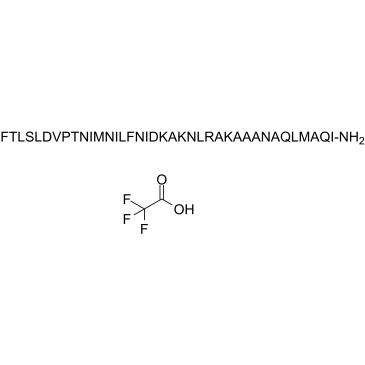
-
GC32590
Urotensin I (Catostomus urotensin I)
Urotensin I (Catostomus urotensin I) (Catostomus urotensin I), a CRF-like neuropeptide, acts as an agonist of CRF receptor with pEC50s of 11.46, 9.36 and 9.85 for human CRF1, human CRF2 and rat CRF2α receptors in CHO cells, and Kis of 0.4, 1.8, and 5.7 nM for hCRF1, rCRF2α and mCRF2β receptors, respectively.
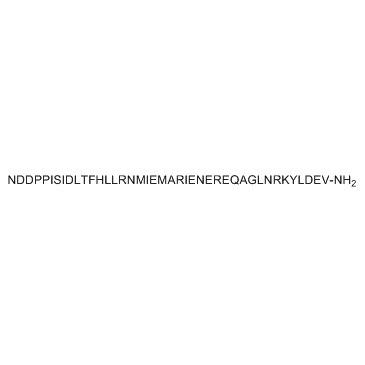
-
GC61583
Urotensin I TFA
Urotensin I (Catostomus urotensin I) TFA, a CRF-like neuropeptide, acts as an agonist of CRF receptor with pEC50s of 11.46, 9.36 and 9.85 for human CRF1, human CRF2 and rat CRF2α receptors in CHO cells, and Kis of 0.4, 1.8, and 5.7 nM for hCRF1, rCRF2α and mCRF2β receptors, respectively.
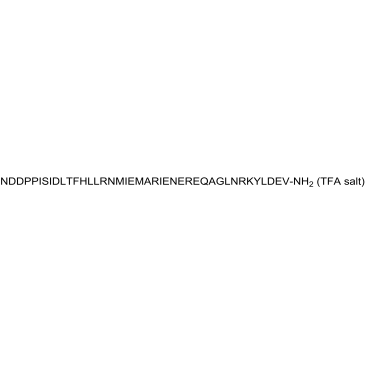
-
GC19374
Verucerfont
Verucerfont is a corticotropin-releasing factor receptor 1 (CRF1) antagonist with IC50s of ~6.1, >1000 and >1000 nM for CRF1, CRF2, and CRF-BP, respectively.



